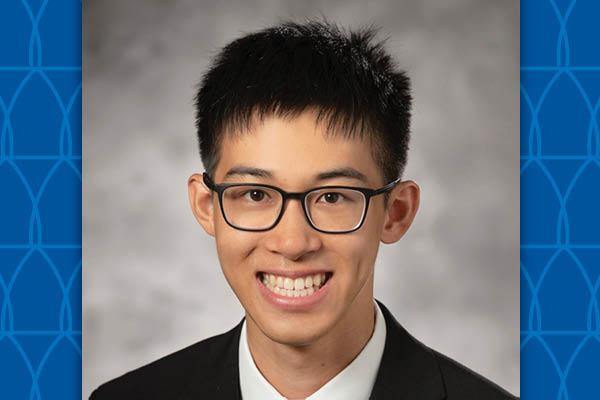Student Spotlight: Jonathan Hui

Jonathan Hui is a second-year student in the Master of Biostatistics program. His hometown is Cupertino, California. Jonathan earned his undergraduate degree from the University of California, Davis. His degrees are in Statistics and Neurobiology, Physiology, and Behavior.
What first sparked your interest in biostatistics?
I gained a deep interest in medical research from my prior experience as a patient suffering from a serious ocular disease. Through reading medical literature, I realized that I needed formal training to deeply understand the analyses that I read about. This led me to declare a second undergraduate major in statistics, and it also led me to pursue graduate-level education in biostatistics at Duke. I love the field, love the math behind the methods, and want to contribute meaningfully to medical research as a biostatistician.
What attracted you to the Master of Biostatistics program at Duke?
As a program affiliated with the Duke School of Medicine, the Master of Biostatistics program offered me an opportunity to work on meaningful research with a nationally recognized clinical enterprise, as well as to receive necessary training to become a biostatistician.
What do you enjoy most about this program?
I love the overall culture of the Biostatistics & Bioinformatics department. Faculty, staff, and students alike are all very approachable, friendly, and constantly building each other up through mentorship or collaboration.
What are some of your favorite classes?
BIOSTAT 702, BIOSTAT 705, and BIOSTAT 719 are my favorite classes. These are statistical modeling courses.
What skills have you gained from the program?
I learned how to think critically and develop quantitative expertise – that is, knowing how to analyze various types of data. Additionally, I have honed my ability to clearly and competently communicate and collaborate with teams of medical scientists.
What does the program do well?
The program provides students with direct access to research under mentorship of an abundance of faculty open to guiding students through their mandatory masters-level
research thesis. The program also emphasizes collaboration and project-based work, which makes me feel confident in my statistical knowledge through relevant hands-on experience.
What's the most challenging aspect of the program?
The program heavily emphasizes collaboration and communication, with research and coursework constantly requiring written work and presentations. While I usually had no trouble with these tasks, I could see this being a huge difficulty for those without a strong background in communication and team science.
Did you participate in a summer internship? What type of work did you do?
Yes. Over the summer, I worked as a graduate student researcher with Professor Ben Goldstein. My work involves deep learning with EHR records. As a result of the work that I did over the summer, I have a conference poster pending review and a manuscript soon to be submitted.
What advice do you have for incoming students?
Be confident, try new things, and do not be afraid to make mistakes while learning. As a student in the Master’s in Biostatistics program, I feel blessed that I am given the space and opportunity to learn and grow in such a supportive controlled environment. The only thing that stops any student in this program from making the most their time here is the fear of being wrong.
What do you like to do outside of work?
I love to hike, cook, draw, write/produce music, play board games, and spend time with friends – especially over meals or bubble tea. I also love Duke basketball, which also helped motivate me to come to Duke as a graduate student.